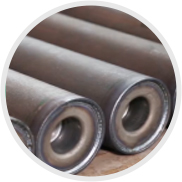 Afrikaans
Afrikaans  Albanian
Albanian  Amharic
Amharic  Arabic
Arabic  Armenian
Armenian  Azerbaijani
Azerbaijani  Basque
Basque  Belarusian
Belarusian  Bengali
Bengali  Bosnian
Bosnian  Bulgarian
Bulgarian  Catalan
Catalan  Cebuano
Cebuano  Corsican
Corsican  Croatian
Croatian  Czech
Czech  Danish
Danish  Dutch
Dutch  English
English  Esperanto
Esperanto  Estonian
Estonian  Finnish
Finnish  French
French  Frisian
Frisian  Galician
Galician  Georgian
Georgian  German
German  Greek
Greek  Gujarati
Gujarati  Haitian Creole
Haitian Creole  hausa
hausa  hawaiian
hawaiian  Hebrew
Hebrew  Hindi
Hindi  Miao
Miao  Hungarian
Hungarian  Icelandic
Icelandic  igbo
igbo  Indonesian
Indonesian  irish
irish  Italian
Italian  Japanese
Japanese  Javanese
Javanese  Kannada
Kannada  kazakh
kazakh  Khmer
Khmer  Rwandese
Rwandese  Korean
Korean  Kurdish
Kurdish  Kyrgyz
Kyrgyz  Lao
Lao  Latin
Latin  Latvian
Latvian  Lithuanian
Lithuanian  Luxembourgish
Luxembourgish  Macedonian
Macedonian  Malgashi
Malgashi  Malay
Malay  Malayalam
Malayalam  Maltese
Maltese  Maori
Maori  Marathi
Marathi  Mongolian
Mongolian  Myanmar
Myanmar  Nepali
Nepali  Norwegian
Norwegian  Norwegian
Norwegian  Occitan
Occitan  Pashto
Pashto  Persian
Persian  Polish
Polish  Portuguese
Portuguese  Punjabi
Punjabi  Romanian
Romanian  Russian
Russian  Samoan
Samoan  Scottish Gaelic
Scottish Gaelic  Serbian
Serbian  Sesotho
Sesotho  Shona
Shona  Sindhi
Sindhi  Sinhala
Sinhala  Slovak
Slovak  Slovenian
Slovenian  Somali
Somali  Spanish
Spanish  Sundanese
Sundanese  Swahili
Swahili  Swedish
Swedish  Tagalog
Tagalog  Tajik
Tajik  Tamil
Tamil  Tatar
Tatar  Telugu
Telugu  Thai
Thai  Turkish
Turkish  Turkmen
Turkmen  Ukrainian
Ukrainian  Urdu
Urdu  Uighur
Uighur  Uzbek
Uzbek  Vietnamese
Vietnamese  Welsh
Welsh  Bantu
Bantu  Yiddish
Yiddish  Yoruba
Yoruba  Zulu
Zulu Belt Scraper Innovations for Enhanced Conveyor System Efficiency and Maintenance
The Importance of Belt Scrapers in Material Handling Systems
In the world of material handling, efficiency and reliability are crucial factors that can significantly impact operational success. Belt scrapers, an often-overlooked component of conveyor systems, play a pivotal role in ensuring that these systems function effectively. This article delves into the importance, types, operational principles, and maintenance of belt scrapers, shedding light on why they are essential in optimizing conveyor performance.
Understanding Belt Scrapers
Belt scrapers are devices installed on the discharge side of a conveyor belt. Their primary function is to remove residual material that adheres to the belt after it has transported goods. Without belt scrapers, material buildup can lead to several issues, including reduced carrying capacity, increased wear on the belt, and contamination of products being handled.
The malfunctions caused by debris on the belt can result in operational inefficiencies, leading to downtime and potentially expensive repairs. Additionally, unclean surfaces can contaminate products, posing risks in industries such as food production, pharmaceuticals, and mining, where cleanliness and hygiene are paramount.
Types of Belt Scrapers
Belt scrapers come in various designs and materials, each tailored for specific applications. The two primary types of scrapers are primary and secondary scrapers.
- Primary Scrapers These are the first line of defense in removing material from the belt. They are typically made of robust materials such as polyurethane or rubber, allowing them to withstand the rigors of heavy-duty applications. Primary scrapers are adjustable and can be fitted with multiple blades to cater to different belt sizes and configurations.
- Secondary Scrapers These are used after the primary scraper to ensure a cleaner surface. Secondary scrapers often have more precise designs and are made from softer materials that conform to the belt's surface. This helps to capture any remaining material particles that the primary scraper might have missed.
belt scraper

It’s essential to choose the correct type of scraper and ensure it is properly installed and maintained to maximize its effectiveness.
Operational Principles
Belt scrapers operate by making contact with the conveyor belt as it moves, using various mechanical principles to dislodge and remove adhering material. The effectiveness of a scraper is determined by several factors, including the angle of attack, the pressure applied to the belt, and the material composition of the scraper itself.
Adjustable features of scrapers allow operators to fine-tune their settings according to the characteristics of the material being handled and the conditions of the environment. For example, in environments where wet or sticky materials are conveyed, scrapers may need to be adjusted to apply more force or to incorporate additional blades to prevent buildup effectively.
Maintenance and Best Practices
Regular maintenance of belt scrapers is critical to ensuring their longevity and effectiveness. Operators should routinely inspect the scrapers for wear and tear, ensuring that blades are replaced as necessary. Proper alignment is also vital; a misaligned scraper can lead to increased wear on the belt and reduced cleaning efficiency.
Incorporating training programs for maintenance personnel on the importance of scrapers and their impact on material handling systems can enhance operational efficiency. This knowledge ensures that any changes in operational parameters are met with prompt adjustments to the scrapers.
Conclusion
In summary, belt scrapers are integral components in material handling systems that ensure operational efficiency, product integrity, and the longevity of conveyor belts. By understanding their types, operational principles, and necessary maintenance practices, industries can significantly optimize their material handling processes. Investing in quality belt scrapers and adhering to best practices will lead to smoother operations, less downtime, and improved overall productivity. As the industry continues to evolve, the role of belt scrapers will remain essential in supporting the ever-increasing demand for efficient material handling solutions.
-
Revolutionizing Conveyor Reliability with Advanced Rubber Lagging PulleysNewsJul.22,2025
-
Powering Precision and Durability with Expert Manufacturers of Conveyor ComponentsNewsJul.22,2025
-
Optimizing Conveyor Systems with Advanced Conveyor AccessoriesNewsJul.22,2025
-
Maximize Conveyor Efficiency with Quality Conveyor Idler PulleysNewsJul.22,2025
-
Future-Proof Your Conveyor System with High-Performance Polyurethane RollerNewsJul.22,2025
-
Driving Efficiency Forward with Quality Idlers and RollersNewsJul.22,2025





























